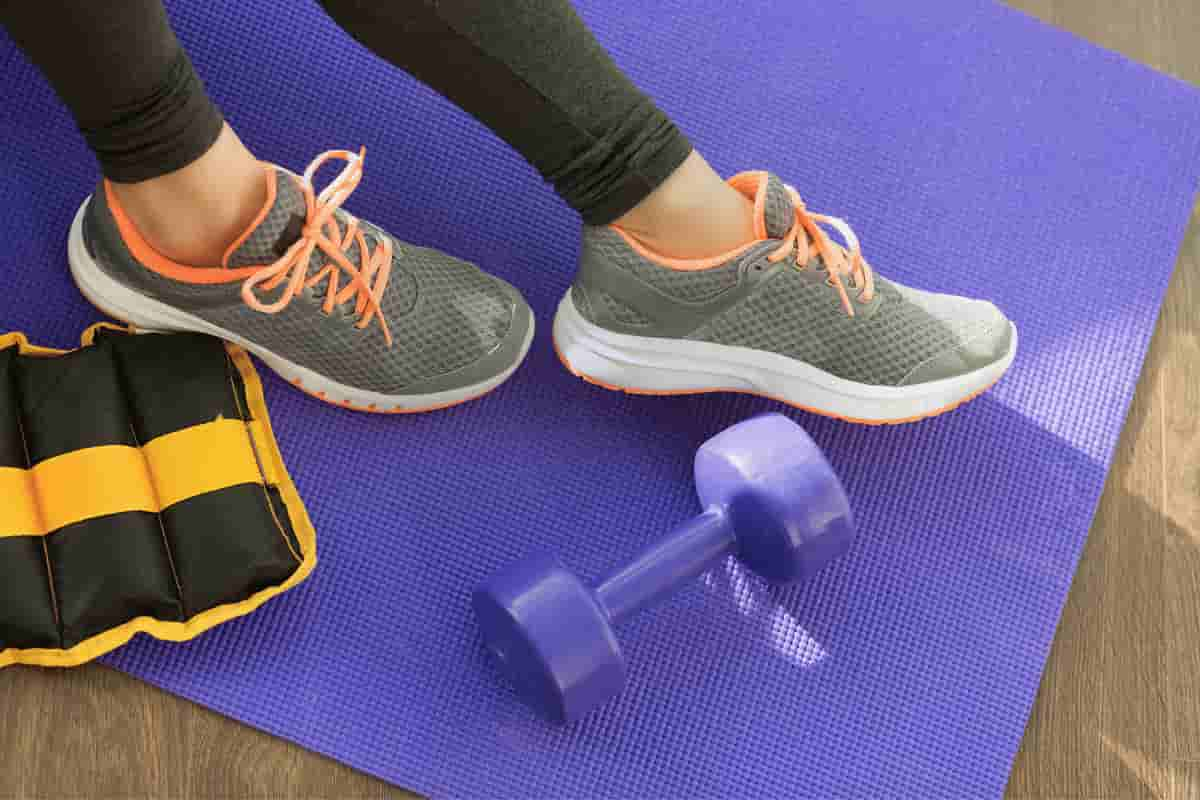HIIT – The Secret to Losing Weight During Menopause

While hot flashes, insomnia, and brain fog frustrate a majority of women around menopause, many report that weight gain is the most upsetting symptom of all.
Thanks to a slowing metabolism and changing hormones, menopause increases your likelihood of gaining and maintaining extra weight. This menopause-related weight gain often is concentrated on the abdomen (“belly fat”).
Weight gain can be discouraging, lower your self-esteem and fuel irritability and depression. While cutting back a bit on calories and jogging a couple of days a week may have handled excess pounds in younger years, weight loss becomes more challenging with age.
Menopause and Hormonal Weight Gain
While it’s easy to assume that a loss of estrogen in menopause is the culprit in weight gain, studies have shown that it’s actually primarily caused by aging and the lifestyle changes that come with it.
Unless you take steps to build muscle, the body naturally loses 3-8% of your muscle mass every decade after age 30. The rate of loss accelerates after age 60. Not only is muscle critical for strength and function, it’s a key part of your metabolic health. The proportion of muscle in your body affects both how your body processes energy and how many calories it burns every day.
One pound of muscle burns around seven calories each hour, while a pound of fat burns just over one calorie per hour. So, as your body loses muscle with age, your metabolism gets proportionally slower.
What menopause does contribute to is an increase in body fat and the redistribution of fat to the abdomen. Simply put, aging causes weight gain but menopause contributes to belly fat.
Why Exercise Is So Important
Losing excess weight may be a top priority for many people in midlife, but exercise offers many more additional benefits. Not only can exercise promote sleep, regulate hormones, boost libido and maintain bone density, it’s one of the best ways to regulate your mood and relieve stress.
Chronically high stress contributes to the cycle of poor sleep, weight gain, hot flashes, and other menopause symptoms. Exercise lowers the stress hormone cortisol and is just as effective as medication at improving anxiety and depression.
At the end of the day, exercise is one of the biggest gifts you can give your body and mind.
HIIT for Menopause Weight Gain
One of the best types of exercise during menopause is high-intensity interval training (HIIT). HIIT has been shown to help you lose weight faster and keep it off better during a more challenging time like menopause.
HIIT is built around short, high-intensity periods of exercise followed by longer periods of lower-intensity movement. During the high-intensity portion, you’ll work full out at your maximum effort. You should barely be able to breathe! Then, you’ll catch your breath during the slower period to be ready for the next interval.
For many women, HIIT workouts are more effective than longer, moderate-intensity workouts for overall weight and fat loss during menopause.
In a small study of postmenopausal women with obesity, those who participated in HIIT were more likely to stick with their program and lost twice as much weight as those assigned to the endurance program. What’s more, the HIIT group significantly changed their body composition (fat versus muscle mass) and body mass index.
A major bonus of HIIT is getting results in less time. A recent study of sedentary men found that just 10 minutes of HIIT three times a week achieved the same cardiometabolic health results as 50 minutes of moderate-intensity endurance exercise.
So, instead of needing to find a few hours a week for cardio in your schedule, you can get a similar benefit in about half the time.
Start a HIIT Workout Routine
In recent years, HIIT classes have become popular offerings at gyms and health clubs. Some fitness studios like Orange Theory specialize in HIIT. You can also find HIIT workouts online, everywhere from apps to blogs to YouTube.
You can also follow HIIT intervals on your own using any form of cardio exercise. Some examples include:
- Running
- Cycling
- Rowing
- Jumping jacks
- Burpees
- Jump squats
- Mountain climbers
- Pushups
High intensity has to be hard
It’s important to remember that high intensity means you are working at your absolute max. You should feel breathless and not be able to talk.
During your recovery intervals, you can either fully rest or keep moving at low intensity. The goal is to catch your breath while keeping your heart rate elevated.
Choose a HIIT ratio
If you’re brand new to HIIT, start with a ratio of 1:3 between high-intensity “work” and low-intensity “recovery.” Examples include:
- 15 seconds work: 45 seconds recovery
- 30 seconds work: 90 seconds recovery
As you get more comfortable and gain fitness, you can increase the ratio to 1:2 and then 1:1. Examples include:
- 30 seconds work: 60 seconds recovery
- 30 seconds work: 30 seconds recovery
Repeat your HIIT interval a few times. When you’re first starting out you may choose to stop after 4-5 minutes. As you get more comfortable, extend the workout to about 10 minutes in total. When you add in a few minutes of warm-up and cool down, your workout will be about 20 minutes long.
Give yourself recovery time
HIIT workouts should be hard. Give yourself at least one day off in between workouts so you can be recovered for the next round.
Is HIIT For You?
HIIT is simple but challenging. Because HIIT is high-intensity, it isn’t necessarily right for beginners to exercise. If you haven’t exercised in a while or are just starting your first exercise routine, start with shorter, less intense sessions.
After a few weeks, you’ll notice that it feels a little easier and you feel stronger and more confident. People in their 60s and 70s can hold their own in HIIT classes alongside people in their 20s and 30s, kicking butt and adapting exercises as they need to.
While HIIT is effective for weight loss, the best exercise routine incorporates a variety of activities like strength training that address other aspects of health. You also should feel free to do what you love—there’s room for dancing, kickboxing, swimming or hiking in the rest of your week.
If you’re having trouble losing belly fat, or weight in general, during menopause, HIIT may be worth a try. If anything, it can be fun and challenging to try a new exercise routine. It just might be the change you need to see the results you’re seeking. You might surprise yourself with just how much your body is capable of!
Sign up for more unique women’s health content
By submitting this form, you agree to the Lisa Health Privacy Policy and Terms of Use


